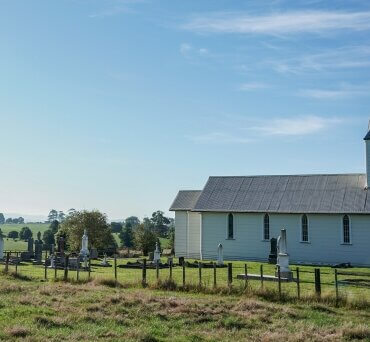
St Paul’s Church at Rangiaowhia
A ‘preamble’ to a treaty or a contract in general terms provides the context of what led to the parties’ engaging in a contract or treaty process and the goals they will pursue in their continued engagement following the conclusion of the signing of the treaty or contract.
Although not ‘enforcable’ legally, the preamble is an important aid in gaining an understanding of that context. As such it is an integral part of the record. The material of a preamble can be reviewed by a court to determine if a party has acted in concert with that context.

Tom Roa
The Preamble to Te Tiriti/the Treaty o/of Waitangi is very often overlooked or merely of passing note when Te Tiriti/The Treaty is discussed. Yet the context and the principles it asserts should be of more than a passing interest in the present call for Aotearoa-New Zealand to give more time and effort into what Te Tiriti/The Treaty was, is, and should/could be.
There is some concern for and controversy with the accuracy of the Maori translation, especially in the Articles. The contra proferentem rule asserts that an ambiguous contract term should be construed against the drafter of the contract. In the Te Tiriti/The Treaty context that means that should there be a dispute in the ambiguity of meaning in Te Tiriti/The Treaty the reo Māori version is given a precedence.
Interestingly the English and the Māori texts of the Preamble express similarly high level aspirations on the part of Queen Victoria and her representative drafters of Te Tiriti/The Treaty.
Both versions state clearly that Queen Victoria ‘s intentions were firstly to protect Māori interests from encroaching British settlement; to provide for that British settlement; and to establish a government to maintain peace and order.
The Māori text including similar statements places another emphasis in suggesting that the Queen’s main promises to Māori were to secure tribal rangatiratanga and to secure Māori land ownership.
That Māori version provides a context for the rangatira of that time to consider in light of the earlier Declaration/He Whakaputanga with growing concerns for the very bad behaviour of certain British citizens and how they might in the context of that excellent relationship work together with Queen Victoria’s representatives whereby both could benefit from a binding agreement of this nature.
I would assert that this context played a major role in the fact that more than 500 Māori signed the Māori version and less than 50 signed the English.
In the context of this Waipā District, in particular in the township of Rangiaowhia, the 10 years following the signing of the Treaty saw a burgeoning realisation of the promise of a shared prosperity where Māori and Pākehā worked together to mutual benefit.
And then the unconscionable avarice of powerful businessmen and women and corrupt politicians who created opportunities for them to seize that prosperity for their own.
The commemoration of the ‘pāhuatanga’, the invasion and subsequent atrocities committed at Rangiaowhia on February 21, is a reminder of the potential that was beginning to be realised.
Knowing our history leads us to an understanding of how we got to be what we are today; and can guide us to what we might be should we learn the lessons of our past.

St Paul’s Church at Rangiaowhia. Photo: Benjamin Wilson.








